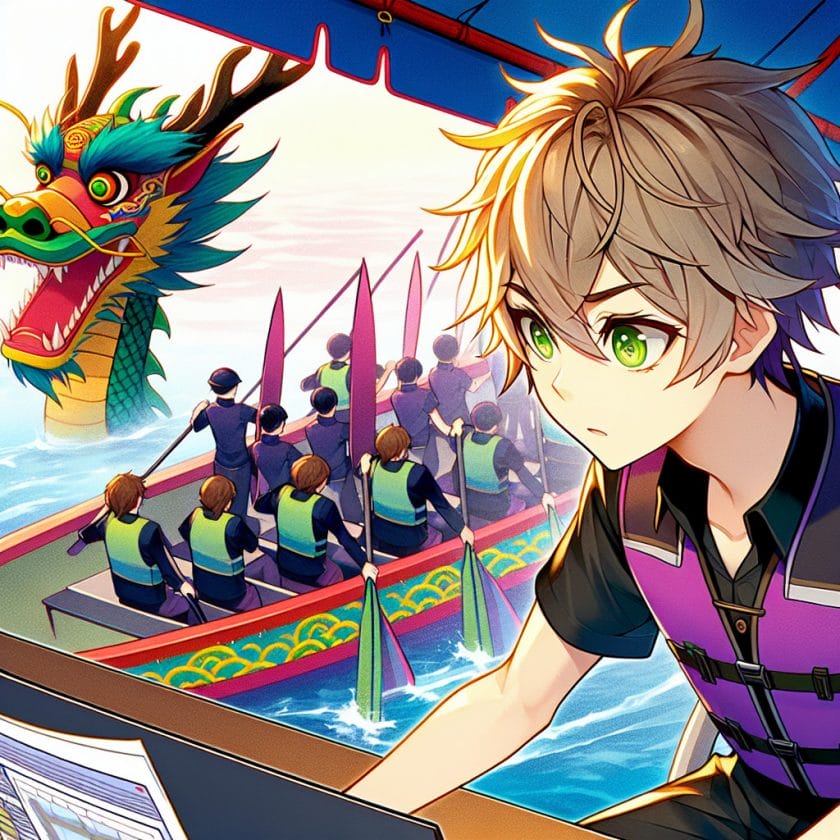[publishpress_authors_box layout="ppma_boxes_840322"]
N/A
1. What is Patreon and how does it work?
Patreon is a popular crowdfunding platform that allows creators, including cosplayers, to receive ongoing financial support from their fans in exchange for exclusive content and perks. It works on a subscription-based model, where fans, known as patrons, pledge a certain amount of money per month to support their favorite creators. In return, these patrons gain access to exclusive content and rewards that are not available to the general public.
How does Patreon work for cosplayers?
For cosplayers, Patreon provides a way to monetize their passion and creativity by offering exclusive behind-the-scenes content, tutorials, cosplay photoshoots, live streams, and more to their most dedicated fans. Cosplayers can set different tiers or levels of support on Patreon, each with its own set of rewards. These rewards can range from access to private Discord servers or live Q&A sessions with the cosplayer to personalized shoutouts or even custom-made costumes.
Benefits of using Patreon for cosplayers:
– Stable income: Patreon provides a reliable source of income for cosplayers who may rely on commissions or convention appearances as their main sources of revenue.
– Direct connection with fans: By offering exclusive content through Patreon, cosplayers can build a closer relationship with their fans and create a sense of community.
– Creative freedom: With the financial support from patrons, cosplayers have the freedom to explore new ideas and projects without worrying about the immediate financial implications.
Overall, Patreon offers an exciting opportunity for cosplayers to showcase their talent and creativity while receiving ongoing support from their dedicated fanbase.
2. How do cosplayers use Patreon to create exclusive content for their fans?
Cosplayers use Patreon as a platform to share exclusive content that goes beyond what they typically post on social media platforms like Instagram or Twitter. This exclusive content can include behind-the-scenes photos and videos of the cosplay creation process, tutorials on crafting techniques, sneak peeks of upcoming costumes, and even personalized messages or shoutouts to individual patrons.
Creating exclusive content:
Cosplayers often create different tiers on Patreon, each offering a unique set of rewards. These rewards can range from access to a private Discord server where fans can interact with the cosplayer directly to receiving monthly digital prints or physical merchandise. Some cosplayers also offer exclusive live streams or Q&A sessions for their patrons, allowing them to engage with their fans in a more intimate and personal way.
Examples of exclusive content on Patreon:
– Step-by-step tutorials: Cosplayers may create detailed tutorials on how they make their costumes, including tips and tricks for specific techniques such as sewing, armor-making, or wig styling.
– Behind-the-scenes footage: Patrons may get access to exclusive photoshoots or videos that showcase the making-of process for a particular cosplay.
– Sneak peeks and early access: Cosplayers may share previews of upcoming projects or new costume designs with their patrons before revealing them to the public.
By providing this exclusive content through Patreon, cosplayers not only reward their most dedicated fans but also incentivize others to become patrons in order to gain access to these behind-the-scenes experiences and insights into the world of cosplay.
3. What are some popular technological tools or equipment that cosplayers use to enhance their content?
Technology plays a significant role in enhancing the quality and impact of cosplayers’ content. From photo editing software to advanced crafting tools, here are some popular technological tools and equipment that cosplayers use:
Photo editing software:
Cosplayers often rely on photo editing software like Adobe Photoshop or Lightroom to enhance their cosplay photos. These tools allow them to adjust lighting, colors, and other visual elements to create stunning and professional-looking images. They can also use editing techniques to add special effects or make their costumes appear more realistic.
Advanced crafting tools:
Cosplayers use a variety of advanced crafting tools and equipment to bring their costumes to life. These may include:
– 3D printers: Cosplayers can use 3D printers to create intricate props, accessories, or armor pieces with precise details.
– Laser cutters: Laser cutters are often used to cut precise patterns or designs into materials like foam or wood for costume components.
– Heat guns: Heat guns are used to shape thermoplastic materials such as Worbla or EVA foam, allowing cosplayers to create detailed armor pieces or props.
– Sewing machines: While not necessarily high-tech, sewing machines are essential tools for cosplayers who create their own costumes. They enable faster and more precise stitching, especially when working with complex designs.
These technological tools and equipment help cosplayers push the boundaries of what is possible in cosplay creation, allowing them to achieve greater accuracy, detail, and overall visual impact in their costumes and content.
4. How do cosplayers leverage social media platforms to promote their Patreon-exclusive content?
Social media platforms play a crucial role in helping cosplayers promote their Patreon-exclusive content and attract new patrons. By leveraging the reach and engagement of platforms like Instagram, Twitter, TikTok, and YouTube, cosplayers can showcase snippets of their exclusive content while enticing fans to become patrons for full access.
Teasers and previews:
Cosplayers often use social media as a teaser platform by sharing glimpses of their exclusive Patreon content. This could be in the form of behind-the-scenes photos or short video clips that give fans a taste of what they can expect by becoming patrons.
Engagement through interactive posts:
Cosplayers engage with their social media followers by posting interactive content that encourages them to join their Patreon community. This can include polls, Q&A sessions, or even contests where fans have a chance to win exclusive rewards available only to patrons.
Direct promotion and call-to-action:
Cosplayers regularly promote their Patreon page on social media by sharing direct links and providing compelling reasons why fans should consider becoming patrons. They may highlight the exclusive content they offer, the benefits of joining their Patreon community, or even special limited-time offers or discounts.
By leveraging social media platforms effectively, cosplayers can generate buzz and excitement around their Patreon-exclusive content, ultimately driving more fans to support them on Patreon and gain access to these exclusive experiences.
5. Can you provide examples of innovative ways that cosplayers incorporate technology into their costumes or performances?
Cosplayers are known for their creativity and ingenuity when it comes to incorporating technology into their costumes and performances. Here are a few examples of innovative ways cosplayers have utilized technology:
LED lighting:
LED lighting is a popular choice among cosplayers who want to add a dynamic element to their costumes. They embed LED strips or individual LEDs into their costumes, props, or accessories to create eye-catching visual effects. For example, a cosplayer portraying Iron Man may incorporate LED lights into the arc reactor on their chest or the repulsor beams in their hands.
Mechanical components:
Some cosplayers take it a step further by incorporating mechanical components into their costumes. This could include motorized wings that can be extended or retracted, animatronic features that mimic facial expressions, or even robotic limbs that move in sync with the wearer’s movements.
Projection mapping:
Projection mapping is another innovative technique used by cosplayers to bring static objects to life. By projecting images or videos onto their costumes or props, cosplayers can create the illusion of movement or dynamic visual effects. For example, a cosplayer portraying a character with glowing tattoos could use projection mapping to make the tattoos appear to shift and change colors.
These are just a few examples of how cosplayers incorporate technology into their costumes and performances. By embracing technological advancements, cosplayers are able to push the boundaries of what is possible in cosplay and create truly immersive and visually stunning experiences for themselves and their audience.
6. Are there any specific software or apps that cosplayers find useful in managing their Patreon accounts and delivering exclusive content?
Managing a Patreon account and delivering exclusive content requires efficient organization and communication. Fortunately, there are several software applications that cosplayers find useful in streamlining these processes:
Patreon Manager:
Patreon Manager is an official app developed by Patreon itself. It allows creators to manage their Patreon account on-the-go, providing access to key features such as posting updates, sending messages to patrons, tracking earnings, and managing membership tiers.
Discord:
Discord is a popular communication platform used by many cosplayers to interact with their patrons. It allows for real-time chat, voice calls, video calls, screen sharing, and more. Cosplayers often create private Discord servers exclusively for their patrons where they can engage with them directly and provide updates on upcoming projects or exclusive content.
Social media scheduling tools:
Cosplayers often use social media scheduling tools like Hootsuite or Buffer to plan and schedule posts across multiple platforms. These tools allow them to maintain a consistent presence on social media while saving time by scheduling posts in advance.
Google Drive or Dropbox:
Cloud storage platforms like Google Drive or Dropbox are commonly used by cosplayers to share large files with their patrons. They can upload high-resolution photos, videos, or other digital content and provide access to specific folders or files only to their patrons.
These software applications and tools help cosplayers effectively manage their Patreon accounts, communicate with their patrons, and deliver exclusive content in a streamlined and organized manner.
7. How does the use of technology help Patreon cosplayers connect with their audience on a more personal level?
Technology plays a crucial role in helping Patreon cosplayers connect with their audience on a more personal level. It allows for direct communication, real-time interactions, and the creation of immersive experiences that foster a sense of community and intimacy.
Direct communication:
Through platforms like Discord or Patreon’s messaging system, cosplayers can engage in direct conversations with their patrons. This enables them to answer questions, provide personalized feedback or advice, and build a closer relationship with their fans.
Real-time interactions:
Live streaming platforms such as Twitch or YouTube Live give cosplayers the opportunity to interact with their audience in real-time. They can host live Q&A sessions, showcase their cosplay progress, or even perform live performances while receiving instant feedback and reactions from their fans.
Immersive experiences:
By incorporating technologies like virtual reality (VR) or augmented reality (AR), cosplayers can create immersive experiences for their audience. For example, they may use VR to give fans a virtual tour of their cosplay workspace or showcase 360-degree views of their costumes. AR can also be used to overlay digital elements onto physical props or create interactive experiences at conventions or events.
Through these technological advancements, Patreon cosplayers are able to break down barriers and connect with their audience on a more personal level. This fosters a stronger sense of community and loyalty among fans who feel seen and valued by the cosplayer.
8. What are some challenges or limitations that cosplayers face when using technology for their exclusive content on Patreon?
While technology offers many opportunities for cosplayers to enhance their exclusive content on Patreon, it also presents certain challenges and limitations. Some of these challenges include:
Technical expertise:
Not all cosplayers may have the necessary technical skills or knowledge to fully utilize the potential of certain technologies. Learning how to use advanced software, equipment, or techniques can be time-consuming and require a steep learning curve.
Costs and affordability:
Some technological tools or equipment can be expensive, especially for cosplayers who are just starting or have limited financial resources. Investing in high-quality cameras, editing software, or crafting tools may not always be feasible for everyone.
Time constraints:
Creating high-quality exclusive content often requires significant time and effort. Cosplayers may find it challenging to balance their cosplay projects, Patreon commitments, and other personal or professional responsibilities.
Accessibility and inclusivity:
Certain technologies may not be accessible to everyone due to factors such as physical disabilities or financial limitations. It is important for cosplayers to consider inclusivity when incorporating technology into their exclusive content.
Despite these challenges, many cosplayers find ways to overcome them by seeking support from communities or collaborating with others who have complementary skills. They also prioritize learning and adapting to new technologies that align with their creative vision and budgetary constraints.
9. Are there any privacy concerns associated with sharing exclusive content through Patreon? How do cosplayers address these concerns?
When sharing exclusive content through Patreon, privacy concerns can arise regarding the protection of personal information, copyright infringement, or unauthorized distribution of content. To address these concerns, cosplayers take several measures:
Privacy settings:
Patreon allows creators to set different levels of access to their exclusive content based on the patron’s subscription tier. This ensures that only patrons who have pledged a certain amount of money per month have access to specific content.
Watermarking and copyright protection:
Cosplayers often watermark their photos or videos with their logo or website URL to discourage unauthorized distribution. They may also include copyright statements in their posts to make it clear that the content is protected by intellectual property rights.
Terms of use and legal agreements:
Many cosplayers include terms of use or legal agreements on their Patreon page, specifying the permitted use of exclusive content, prohibiting unauthorized sharing or reproduction, and outlining consequences for violations.
Communication with patrons:
Cosplayers maintain open communication with their patrons, emphasizing the importance of respecting privacy and copyright. They often remind patrons not to share exclusive content outside of the Patreon platform and address any concerns or questions related to privacy directly.
By implementing these measures and maintaining clear communication, cosplayers can mitigate privacy concerns associated with sharing exclusive content through Patreon, ensuring that their creations are enjoyed by their dedicated fans while protecting their rights as creators.
10. How has the rise of virtual reality (VR) and augmented reality (AR) impacted the way cosplayers create and share exclusive content on platforms like Patreon?
The rise of virtual reality (VR) and augmented reality (AR) has revolutionized the way cosplayers create and share exclusive content on platforms like Patreon. These technologies offer new avenues for immersive experiences, enhanced visual storytelling, and interactive engagement with fans.
Virtual reality (VR
11. Do all cosplay genres benefit equally from leveraging technology for exclusive content on Patreon, or are there certain subcultures within cosplay that have embraced it more than others?
Different Levels of Technological Integration
Cosplay genres vary in their level of technological integration, which affects the extent to which they can benefit from leveraging technology for exclusive content on Patreon. Some genres, such as sci-fi and fantasy, naturally lend themselves to incorporating advanced technologies like animatronics or LED lighting into costumes. These genres have seen a greater embrace of technology for creating exclusive content on platforms like Patreon. On the other hand, historical or period-based cosplays may rely more on traditional craftsmanship and historical accuracy rather than technological advancements.
Technological Divide in Cosplay Subcultures
Within the broader cosplay community, there are subcultures that have embraced technology more than others. For example, the cyberpunk and steampunk subcultures heavily incorporate technology into their costumes and props. These subcultures often utilize digital media platforms like Patreon to share behind-the-scenes videos showcasing their intricate creations or offer tutorials on integrating technology into cosplay. In contrast, subcultures focused on simpler or minimalist designs may not prioritize leveraging technology for exclusive content creation.
Examples:
1. The “cos-tech” subculture has emerged as a niche within the larger cosplay community, where enthusiasts combine their love for both cosplay and technology. This subculture actively explores innovative ways to integrate cutting-edge technologies like augmented reality (AR) or virtual reality (VR) into their costumes and performances. They leverage platforms like Patreon to provide exclusive access to AR-enhanced videos or interactive experiences for their supporters.
2. The anime and manga cosplay community has also embraced technology in unique ways. With advancements in 3D printing and digital design tools, cosplayers can create highly detailed replicas of anime characters’ weapons or accessories. Patreon allows them to share exclusive content, such as 3D model files or tutorials on how to create these intricate props using technology.
Overall, while not all cosplay genres benefit equally from leveraging technology for exclusive content on platforms like Patreon, certain subcultures within cosplay have embraced it more due to their inherent themes and interests.
12. In what ways can technology help cosplayers monetize their skills and creations beyond just creating exclusive content on Patreon?
E-commerce Integration
One way technology helps cosplayers monetize their skills and creations is through e-commerce integration. With the rise of online marketplaces and platforms like Etsy or Shopify, cosplayers can sell their handmade costumes, props, or merchandise directly to fans. By leveraging technology, cosplayers can reach a global audience and establish their own online stores to showcase and sell their creations beyond the scope of exclusive content on Patreon.
Virtual Events and Workshops
Technology also enables cosplayers to monetize their skills by hosting virtual events and workshops. These events can range from live-streamed panels discussing cosplay techniques to interactive workshops where participants learn how to create specific costume elements. Through platforms like Twitch or Zoom, cosplayers can charge admission fees for these virtual experiences, expanding their revenue streams beyond Patreon.
Examples:
1. Many cosplayers have successfully launched their own online stores using e-commerce platforms like Shopify. They offer a variety of products ranging from fully crafted costumes to individual costume pieces or accessories that fans can purchase directly.
2. Cosplay influencers often organize paid virtual workshops where they teach specific crafting techniques or provide personalized guidance in creating accurate character portrayals. These workshops allow fans to learn directly from experienced cosplayers while providing an additional source of income for the hosts.
By utilizing technology for e-commerce integration and hosting virtual events/workshops, cosplayers can monetize their skills and creations in diverse ways, expanding their revenue streams beyond exclusive content on Patreon.
13. Have there been any notable success stories where a cosplayer’s use of technology for exclusive content on Patreon significantly boosted their career or fanbase?
Yaya Han: From Cosplay to Business Empire
One notable success story is that of Yaya Han, a renowned cosplayer who leveraged technology and exclusive content on Patreon to significantly boost her career and fanbase. Yaya Han started as a cosplayer in the early 2000s and quickly gained recognition for her intricate costumes and attention to detail. She utilized platforms like Patreon to offer exclusive behind-the-scenes content, tutorials, and personalized interactions with her supporters.
Through her Patreon page, Yaya Han was able to fund larger-scale projects, attend international conventions, and expand her brand. Her use of technology allowed her to reach a wider audience and establish herself as not only a talented cosplayer but also a successful entrepreneur. Today, she runs her own cosplay supply company and collaborates with major brands in the cosplay industry.
Key Factors:
1. Consistent Creation of Exclusive Content: Yaya Han regularly provided high-quality exclusive content on platforms like Patreon, which kept her supporters engaged and motivated to continue their patronage.
2. Personalized Interactions: By leveraging technology tools like video calls or live chats, Yaya Han offered personalized interactions with her fans through Patreon tiers. This created a sense of community and connection among her supporters.
3. Leveraging Social Media: Yaya Han effectively utilized social media platforms like Instagram or Twitter to promote her exclusive content on Patreon. This helped attract new patrons and increase visibility within the cosplay community.
Yaya Han’s success story highlights how leveraging technology for creating exclusive content on Patreon can significantly boost a cosplayer’s career and fanbase, leading to opportunities beyond cosplay itself.
14. Are there any ethical considerations that come into play when using technology for creating and sharing exclusive cosplay content on platforms like Patreon?
Intellectual Property Rights
One ethical consideration is the potential infringement of intellectual property rights when using technology to create and share exclusive cosplay content. Cosplayers often portray characters from existing franchises, such as movies, anime, or video games. While cosplay is generally considered a form of fan art and falls under fair use, monetizing copyrighted characters through exclusive content can be a gray area. It is crucial for cosplayers to respect the intellectual property rights of the original creators and seek appropriate permissions or licenses when necessary.
Transparency and Authenticity
Another ethical consideration revolves around transparency and authenticity in creating exclusive cosplay content. Some cosplayers may rely heavily on photo editing software or filters to enhance their appearance in promotional images or videos. While these tools can be used creatively, it is important for cosplayers to maintain transparency with their audience about any digital alterations made. This ensures that supporters are aware of what they are truly supporting and helps foster trust within the community.
Guidelines:
1. Research Intellectual Property Laws: Cosplayers should educate themselves on copyright laws specific to their country and understand the limitations of fair use when monetizing copyrighted characters.
2. Seek Permission or Licenses: If planning to sell exclusive content featuring copyrighted characters, cosplayers should reach out to the original creators or licensors for permission or inquire about licensing agreements.
3. Be Transparent About Digital Alterations: When presenting exclusive content on platforms like Patreon, cosplayers should clearly disclose any digital alterations made to their photos or videos, ensuring transparency with their supporters.
By considering these ethical guidelines surrounding intellectual property rights and transparency, cosplayers can navigate the use of technology for creating and sharing exclusive cosplay content on platforms like Patreon in an ethical and responsible manner.
15. What advice would you give to aspiring cosplayers who want to leverage technology effectively for creating unique and engaging exclusive content on platforms like Patreon?
Stay Up-to-Date with Technological Trends
To effectively leverage technology for creating unique and engaging exclusive content, aspiring cosplayers should stay up-to-date with technological trends relevant to their chosen cosplay genre. This includes researching advancements in materials, techniques, or digital tools that can enhance their costumes or props. By being aware of the latest technologies, cosplayers can incorporate them into their creations and offer fresh and exciting content to their patrons.
Experiment and Innovate
Aspiring cosplayers should not be afraid to experiment and innovate with technology. Trying out new techniques or integrating emerging technologies like AR/VR or 3D printing can set them apart from others in the community. By pushing boundaries and thinking outside the box, they can create unique experiences for their supporters on platforms like Patreon.
Tips:
1. Join Online Communities: Engage with online communities specific to your cosplay genre or interests to learn about technological advancements, share ideas, and collaborate with fellow cosplayers.
2. Attend Workshops and Conventions: Participate in workshops or conventions focused on cosplay craftsmanship or technology integration. These events provide valuable insights, networking opportunities, and hands-on learning experiences.
3. Embrace Collaboration: Collaborate with individuals skilled in different areas of technology, such as electronics or programming, to bring innovative ideas to life.
By staying informed about technological trends, experimenting with new techniques, and embracing collaboration opportunities, aspiring cosplayers can leverage technology effectively for creating unique and engaging exclusive content on platforms like Patreon.
In conclusion, Patreon cosplayers are embracing technology to create exclusive content and connect with their fans like never before. From livestreams to virtual meet-ups, these tech-savvy cosplayers are taking their craft to new heights. If you’re interested in exploring the world of cosplay or want access to exciting behind-the-scenes content, be sure to check out our cosplay services. We can’t wait to bring your favorite characters to life!
N/A








